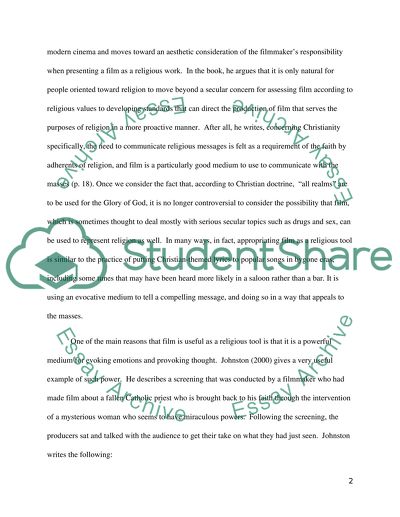Cite this document
(The Nature of Religious Film and Faith and Cultural Conflict in the Fi Essay, n.d.)
The Nature of Religious Film and Faith and Cultural Conflict in the Fi Essay. Retrieved from https://studentshare.org/religion-and-theology/1583928-critically-assess-hindu-film-daya-sagar-1978-that-depicts-the-life-of-christ-in-what-way-might-your-chosen-film-be-said-to-be-religious
The Nature of Religious Film and Faith and Cultural Conflict in the Fi Essay. Retrieved from https://studentshare.org/religion-and-theology/1583928-critically-assess-hindu-film-daya-sagar-1978-that-depicts-the-life-of-christ-in-what-way-might-your-chosen-film-be-said-to-be-religious
(The Nature of Religious Film and Faith and Cultural Conflict in the Fi Essay)
The Nature of Religious Film and Faith and Cultural Conflict in the Fi Essay. https://studentshare.org/religion-and-theology/1583928-critically-assess-hindu-film-daya-sagar-1978-that-depicts-the-life-of-christ-in-what-way-might-your-chosen-film-be-said-to-be-religious.
The Nature of Religious Film and Faith and Cultural Conflict in the Fi Essay. https://studentshare.org/religion-and-theology/1583928-critically-assess-hindu-film-daya-sagar-1978-that-depicts-the-life-of-christ-in-what-way-might-your-chosen-film-be-said-to-be-religious.
“The Nature of Religious Film and Faith and Cultural Conflict in the Fi Essay”, n.d. https://studentshare.org/religion-and-theology/1583928-critically-assess-hindu-film-daya-sagar-1978-that-depicts-the-life-of-christ-in-what-way-might-your-chosen-film-be-said-to-be-religious.


